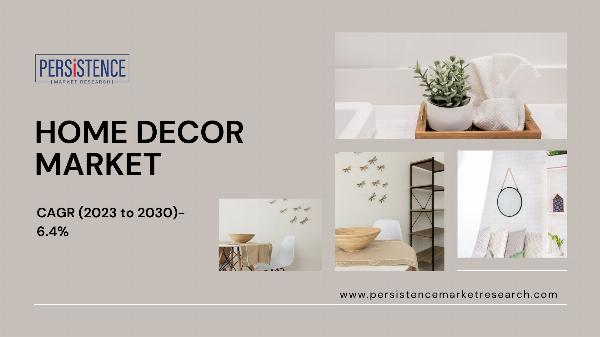 Local SEO Boost – Put Your Business on the Local Map!
Local SEO Boost – Put Your Business on the Local Map!
New Product Launches Fuel Decorative Films Foils Market Expansion
Written by Pooja » Updated on: June 17th, 2025 188 views

The global decorative films and foils market is projected to reach USD 18,453.8 million in 2023 and grow to USD 30,636.7 million by 2033, driven by a steady growth rate of 5.2%. Decorative films, typically used on glass and other substrates for aesthetic enhancement, and decorative foils, which are applied to wooden surfaces, are experiencing increased demand due to booming construction activities and rising consumer spending on home and commercial interiors. The market, which saw a 5.6% CAGR from 2017 to 2022, was impacted by the COVID-19 pandemic but is expected to rebound with investments in infrastructure and innovations in eco-friendly solutions. The growing preference for customized designs, bolstered by online platforms, presents new opportunities for manufacturers to cater to evolving consumer demands.
The decorative films and foils market is witnessing unprecedented growth, and one of the key factors driving this expansion is the consistent launch of innovative products by leading manufacturers. As companies race to meet the increasing demand for aesthetically appealing, durable, and eco-friendly solutions, new product launches are playing a pivotal role in shaping the market landscape.
From advanced smart films to eco-conscious foils, the introduction of cutting-edge products is not only addressing the evolving needs of consumers but also setting new standards in quality, functionality, and sustainability. Below, we take a closer look at how these new product launches are fueling market growth and the types of innovations shaping the future of the decorative films and foils industry.
Smart Films and Interactive Technologies
The launch of smart films, which can change opacity or color based on external factors such as light, temperature, or electrical input, is revolutionizing the decorative films market. These films provide dynamic control over lighting and privacy, making them highly desirable for residential, commercial, and even automotive applications.
Electrochromic Films: Electrochromic smart films, which transition from clear to opaque with the flip of a switch, are being increasingly integrated into smart home and office systems. This technology enhances energy efficiency by reducing the need for curtains or blinds and helps maintain a consistent indoor temperature by controlling the amount of light and heat entering through windows.
Thermochromic Films: Another innovation in the smart film category is thermochromic films, which change color based on temperature fluctuations. These films are particularly useful in regions with extreme weather conditions, as they can help regulate indoor environments while offering aesthetic appeal.
With ongoing advancements in smart films, manufacturers are continually introducing new products with enhanced capabilities. These launches not only boost the global market but also allow companies to differentiate themselves in a competitive industry.
Eco-Friendly Decorative Films
As sustainability becomes a growing priority across industries, decorative film manufacturers are responding with a wave of eco-friendly product launches. These films are made from recyclable materials, use fewer chemicals in production, and contribute to energy savings by providing solar control features.
Recyclable Films: Many manufacturers have introduced decorative films that are fully recyclable or produced using eco-friendly processes. These films are gaining traction among environmentally conscious consumers and businesses, particularly in regions with stringent environmental regulations.
Low-Emission Films: Low-VOC (volatile organic compounds) and formaldehyde-free films are being launched to cater to consumers who prioritize indoor air quality and sustainability. These products are particularly appealing in markets where green building standards, such as LEED certification, are a key consideration.
The launch of eco-conscious decorative films not only addresses the growing demand for sustainable products but also aligns with the global shift towards greener practices. As a result, manufacturers who prioritize sustainability are seeing a strong market response, driving further innovation and expansion.
Customizable and Printable Films
Customization has become a defining trend in the decorative films and foils market, with consumers and businesses seeking personalized solutions for their spaces. To meet this demand, manufacturers are launching printable films that allow for the creation of unique patterns, textures, and designs.
Digitally Printable Films: Digital printing technologies have revolutionized the decorative films market by enabling high-resolution, customizable designs. These films are being widely used in commercial spaces for branding, advertising, and interior décor, providing a cost-effective way to update spaces without undergoing extensive renovations.
Textured and 3D Films: In addition to printable films, manufacturers are introducing decorative films with textured and 3D effects. These products mimic the look and feel of materials such as wood, metal, and stone, offering a realistic yet affordable alternative for interior and exterior applications.
The introduction of customizable films is not only enhancing the aesthetic appeal of spaces but also opening new avenues for businesses to express their brand identities through innovative designs. As a result, these new product launches are significantly contributing to the growth of the decorative films and foils market.
Protective and Functional Films
The launch of films with functional properties, such as scratch resistance, antimicrobial protection, and self-healing capabilities, is another key trend shaping the decorative films and foils market. These films provide additional benefits beyond aesthetics, making them highly sought after in industries where durability and hygiene are essential.
Self-Healing Films: Self-healing decorative films are designed to automatically repair minor scratches or abrasions over time, extending the lifespan of the product and maintaining its appearance. These films are being widely adopted in the automotive and furniture sectors, where wear and tear is common.
Antimicrobial Films: Decorative films with built-in antimicrobial properties are gaining popularity in healthcare, hospitality, and food service industries. These films inhibit the growth of bacteria and fungi, contributing to cleaner, more hygienic environments while still providing aesthetic value.
The introduction of these high-performance films is helping manufacturers cater to the growing demand for products that offer both functional and decorative benefits. As industries increasingly prioritize durability and hygiene, the launch of protective films is expected to play a critical role in driving market growth.
New Product Launches as a Competitive Strategy
In an increasingly competitive market, companies are relying on new product launches as a strategic tool to gain market share and differentiate themselves from their competitors. By introducing innovative solutions, manufacturers can cater to niche consumer preferences, enter new geographical markets, and stay ahead of changing industry trends.
Product Diversification: Many leading manufacturers are expanding their product portfolios to include a wide range of decorative films, from basic designs to advanced smart films. This diversification strategy allows companies to meet the needs of different customer segments, from budget-conscious consumers to high-end commercial clients.
Geographic Expansion: New product launches are also enabling companies to enter untapped markets, particularly in developing regions where demand for decorative films and foils is on the rise. By introducing products tailored to the specific needs of these markets, manufacturers can expand their global presence and tap into new revenue streams.
As more companies invest in product innovation and diversification, the decorative films and foils market is poised for continued growth. The introduction of new products is not only fueling market expansion but also helping businesses establish themselves as leaders in this dynamic industry.
Conclusion: The Role of Innovation in Market Expansion
The rapid expansion of the global decorative films and foils market can be largely attributed to the consistent introduction of new, innovative products that meet the evolving needs of consumers and businesses. From smart films and eco-friendly options to customizable designs and protective features, the latest product launches are driving demand and setting new industry standards.
As manufacturers continue to push the boundaries of what decorative films and foils can achieve, the market is expected to experience sustained growth in the coming years. Companies that prioritize innovation, sustainability, and customization will be well-positioned to capitalize on the growing opportunities in this thriving market.
With a projected market value of USD 30.6 billion by 2033, the future of the decorative films and foils market looks bright, driven by the continuous launch of products that combine aesthetics, functionality, and environmental responsibility.
Note: IndiBlogHub features both user-submitted and editorial content. We do not verify third-party contributions. Read our Disclaimer and Privacy Policyfor details.
Copyright © 2019-2025 IndiBlogHub.com. All rights reserved. Hosted on DigitalOcean for fast, reliable performance.

















